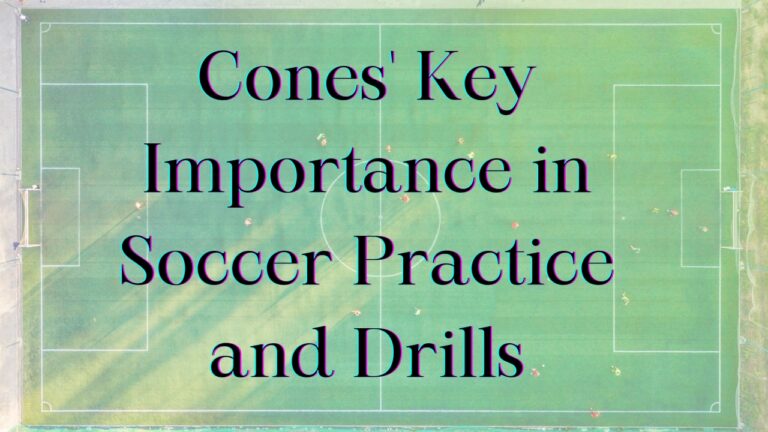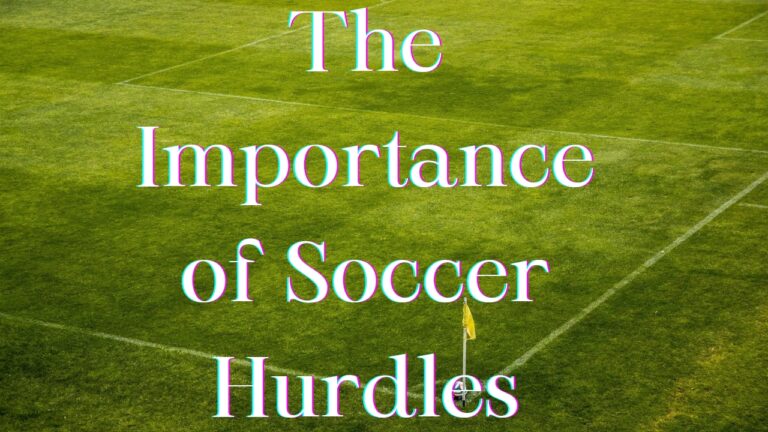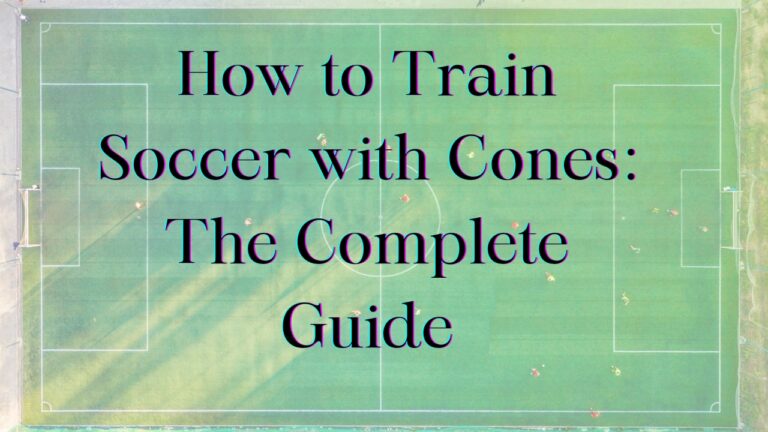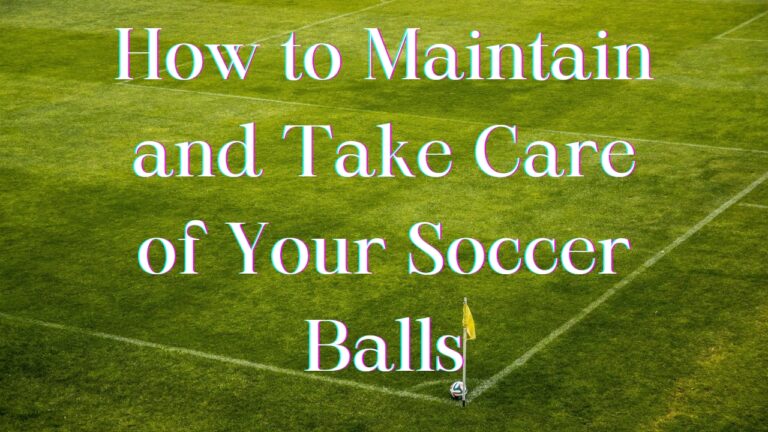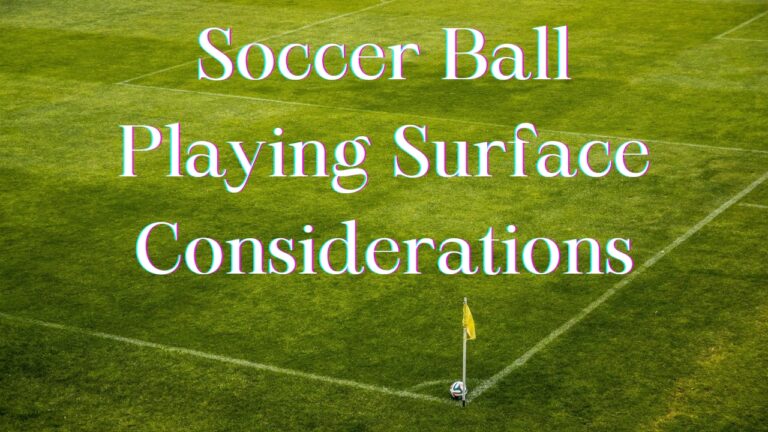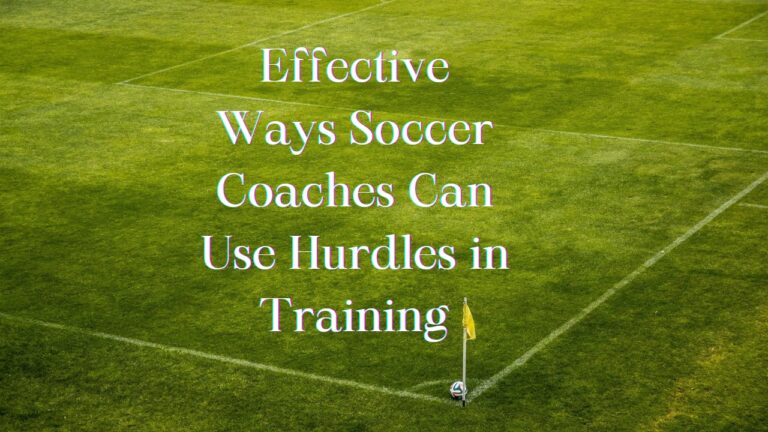Soccer is a fast-paced, dynamic sport that requires players to be agile, quick, and have excellent coordination. To reach peak performance levels, soccer players need to incorporate targeted drills into their training routines that help develop these key attributes. One of the best drill tools for accomplishing this goal is soccer hurdles.
Soccer hurdle drills involve setting up a series of hurdles in straight lines or zig-zag patterns that players leap over and weave through. These drills build leg strength, improve footwork, enhance balance and body control, increase speed and acceleration, and boost overall soccer-specific conditioning. While hurdling may seem basic, incorporating it into practice consistently can lead to impressive gains in fitness, stamina, agility, and mobility on the field.
What Exactly are Soccer Hurdles Drills?
Soccer hurdle drills are a form of agility training that involves placing hurdles in patterns on the field or turf and having players run through them by jumping or hopping over each hurdle. The hurdles are typically set at a height between 6 inches to 12 inches for youth and 15 inches to 18 inches for older players.
The hurdles can be standard adjustable track and field hurdles or makeshift versions using cones, poles, or other markers. The hurdles are spaced apart at even distances, often between 1 to 3 feet for soccer training needs. They can be arranged in straight lines, zig-zags, or other creative patterns to add variety and challenge to the drills.
Soccer hurdle drills differ from ladder drills which focus on lateral footwork by forcing players to drive their momentum forward as they clear each hurdle. The continuous leaping action improves muscle strength and power while the focus on form and rhythm enhances body control and coordination. Players also need to push off quickly from each landing to keep pace and flow.
Compared to simple cone drills, the added hurdles require greater exertion from the legs and core muscles while testing balance and stability at higher intensities. Incorporating soccer hurdles adds diversity to standard drills and helps develop athletic attributes essential for the sport.
7 Key Benefits of Consistent Soccer Hurdle Drills
Incorporating soccer hurdle drills into training regularly can lead to impressive improvements in several performance factors:
1. Improved Footwork and Coordination: Clearing hurdles forwards, backward, and laterally enhance foot speed, rhythm, and overall coordination.
2. Increased Acceleration and Top Speed: The continuous push-off motion from hurdle to hurdle boosts acceleration and builds top speed.
3. Developed Agility: Changing direction at each hurdle improves agility and ability to cut sharply.
4. Soccer-Specific Muscular Endurance: The constant leaping uses fast-twitch muscle fibers key for soccer.
5. Better Body Control: Maintaining a tight core and upright posture over hurdles improves control.
6. Injury Prevention: Strengthened muscles from hurdling help prevent strains and sprains.
7. Fresh and Engaging Training: Hurdles break up repetitive running and make practices more stimulating.
These broad athletic benefits explain why soccer hurdle drills are a top training choice for individuals and teams.
Setting Up Effective Soccer Hurdle Drills
To maximize the training effect of soccer hurdle drills, it’s important to set them up properly:
Hurdle Height: A general guideline is to set hurdles at the mid-shin level. For younger players, 6 to 12 inches is ideal. Older players can use 15 to 18-inch heights.
Hurdle Spacing: Spacing between hurdles can range from 1-3 feet depending on age and skill level. Closer spacing increases the difficulty. Wider spacing allows faster continuous movement.
Hurdle Patterns: Straight lines help build basic technique. Zig-zags and scattered setups challenge agility. Mirror drills create reactiveness.
Using Cones: If hurdles are unavailable, use cones, sticks, or poles at measured heights for substitutes.
Adjusting Heights: Start lower for beginners and gradually increase height as skills improve. Keep lower for lateral drills.
Proper hurdle placement allows athletes to maintain rhythm and push their limits safely. Coaches can increase difficulty and patterns as players advance.
7 Must-Try Soccer Hurdle Drills for All Positions
Here are 7 soccer hurdle drills to build skills and challenge players:
1. Lateral Skater Hops: Hop side-to-side over low hurdles to develop agility.
2. Forward/Backward Zig-Zag Hurdles: Zig-zag through angled hurdles to improve coordination.
3. Straight Line Sprints: Sprint at max speed between hurdles to build acceleration.
4. Dribbling with Hurdles: Maintain close control dribbling a ball through hurdles.
5. Hurdles Cutdown Drill: Plant and cut in different directions at each hurdle.
6. Hurdles with Jumps: Add horizontal or vertical leaps between hurdling to build power.
7. Partner Mirror Drill: Shadow a partner’s hurdle patterns to improve reactiveness.
Varying patterns, speeds, directions, and pairing hurdles with other skills like dribbling keep sessions dynamic.
Proper Form and Technique for Soccer Hurdle Drills
To get the most out of soccer hurdle drills while preventing injury, proper form and technique are crucial:
Maintain Athletic Stance: Keep feet shoulder-width apart, knees slightly bent, chest forward.
Drive Arms Powerfully: Pump arms to generate momentum to carry you over each hurdle.
Keep Hips and Feet Aligned: Don’t allow hips to sink or twist. Strike hurdles evenly with both feet.
Land Softly: Absorb impact on the balls of your feet, then immediately reset for the next hurdle.
Control Body: Stay upright without excessive lean. Keep your eyes focused ahead throughout the drill.
Maintain Rhythm: Stride and leap from hurdle to hurdle smoothly without rushing or crossing feet.
Mastering proper hurdling biomechanics improves performance and prevents undue strain. Coaches should emphasize form and control before upping the speed.
Beginner Modifications and Progressions
When first introducing soccer players to hurdle drills, use these progressions:
Lower Height: Have beginners start with 6-8 inch heights to learn technique.
Walk Over Hurdles: Walking over hurdles teaches rhythm before leaping.
Increase Spacing: Wider spacing between hurdles allows more time to reset between reps.
Eliminate Hurdles: Have players work on foot patterns without hurdles at first.
Slow Reps: Beginners should move through reps slowly focusing on form.
Quickly Progress: Gradually increase hurdle height and speed over time as skills improve.
Single Line: Start with simple single-line hurdle patterns.
Multiple Lines: Add more lines and zig-zags to increase challenges.
Setting up beginner-friendly hurdle drills builds confidence and capability over time.
6 Tips for Preventing Injury During Soccer Hurdle Drills
While extremely effective when done properly, hurdling can lead to injury if caution isn’t taken:
Warm Up Thoroughly: Always warm up muscles through light running and stretching before hurdle drills.
Ensure Proper Spacing: Space hurdles so players don’t have to overstride or collide with hurdles.
Gradually Increase Height: Slowly raise hurdle height over multiple sessions as skills improve.
Maintain Control: Coach players to focus on body control more than all-out speed when performing hurdle drills.
Wear Supportive Shoes: Proper athletic shoes stabilize feet and protect against impact forces when hurdling.
Cool Down and Stretch: Gently cool down and statically stretch leg muscles after hurdle drills.
Following injury prevention, best practices keep players safe while boosting performance.
Equipment to Enhance Soccer Hurdle Drills
In addition to hurdles, coaches can incorporate other equipment to diversify hurdle training:
Agility Ladders: Add lateral shuffling through ladders between hurdling to improve footwork.
Cones: Set up angled cones to weave through to complement linear hurdles.
Soccer Balls: Combine dribbling skills while navigating hurdles.
Stopwatches: Use to time sprint hurdle drills and quantify speed gains over time.
Resistance Bands: Attach bands above ankles or knees to increase leg exertion while hurdling.
Weighted Vests: Add lightweight vests to provide extra load in hurdle drills.
Vertical Jumps: Place boxes or markers to leap on to enhance explosiveness.
Mixing in additional equipment keeps hurdle training mentally and physically challenging.
Sample Soccer Hurdle Circuits for Better Endurance
Hurdles can be incorporated into challenging circuits to build soccer-specific endurance. Here are two samples:
Beginner Circuit
Perform each exercise below for 30 seconds, then rest for 30 seconds between sets. Complete 3 full rounds.
- Forward Zig-Zag Hurdles
- Lateral Hurdle Hops
- Forward Sprints with Hurdles
- Backpedal Zig-Zag Hurdles
- Carioca Hurdles (facing sideways, crossing feet through hurdles)
- High Knees on the Spot
Advanced Circuit
Complete each exercise below for 60 seconds, resting for 60 seconds between sets. Complete 2 full rounds.
- Forward Hurdles with Forward Jumps
- Lateral Hurdles with Lateral Jumps
- Forward Hurdles at Fastest Sprint
- Backward Zig-Zag Hurdles
- Dribbling with Hurdles Drill
- Forward Hurdles with Change of Direction Jumps
Creating hurdle circuits adds variety while improving endurance and athletic capabilities. Tailor distances, times, complexity, and equipment to age and skill level.
Conclusion
Soccer hurdle drills are a simple yet incredibly effective training tool for building key skills. When performed properly and consistently, hurdling improves coordination, footwork, speed, agility, balance, endurance, and overall soccer performance.
Hurdles can be incorporated into drills or challenging circuits targeting different abilities based on player needs. Coaches should focus on sound hurdling technique and gradual progressions to get the most out of hurdle training while preventing injury.
Related Post: The Importance of Soccer Hurdles: A Must-Have Training Tool
Author


